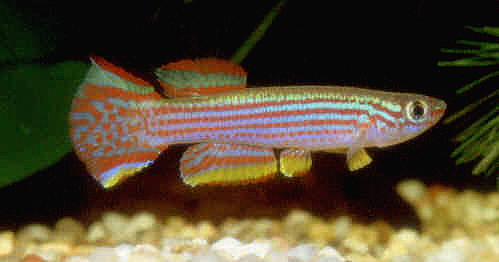| Meaning
of Name |
Refers
to the striped body pattern. |
| First
Description |
Boulenger
G.A. 1911. Descriptions of new African Cyprinodont
fishes. Annals & Magazine of Natural History
(8) 8 (44): p 266. |
| Size |
5 cm |
| Meristics |
- D = 9-10, A = 13, ll = 30-31 (Boulenger 1911)
- D
= 9-10, A = 12-14, ll = 30-31 (Radda & Pürzl 1987)
|
| Karyotype |
n = 20, A = 33 (Scheel 1974) |
| Sub-Genus |
Mesoaphyosemion |
| Group |
striatum |
| Synonyms |
- Haplochilus striatus
Boulenger 1911
- Panchax striatus
Ahl 1924
- Epiplatys striatus
Poll 1951 (in part)
- Aphyosemion striatum
striatum Lambert & Géry 1968
- Aphyosemion
striatum Scheel 1968 (in part)
- Aphyosemion
lujae (non Boulenger 1911) Scheel 1968 (in part)
- Aphyosemion
striatum ogoense (non Pellegrin 1930) Roman 1971
|
| Populations
- Andem
- Cabo San Juan
- Cap Estérias
- Coco Beach
- Kinguélé
- Kouame
- Lambaréné
(northwestern Gabon)
- Libreville
- Macoura (northwestern
Gabon)
- Moyko GJS 00 / 32
- Ndjole
- Ntoum
- Ongam - BDBG 04/26
- BBW 00/26
- G 92 / 3
- GBG 93 / 35
- GBL 85 / 6 Cap
Estérias
- GEMHS 00/33 - Ncolamvan
- GEMHS 00/34 - Abengnam
- GEMLCG 07 / 58
- Nkolanvam "Río Mbinda"
- GEBLCG 07 / 61 - Carretera
Acacayong - Bata
- GJS 00 / 28 - Bengui
3
- GJS 00 / 34
- Cap Estérias - Santa Clara
- GWW 86 / 1
- JH 76 / 3 - 5
km north of Libreville
- JH 76 / 33 - 5 km Lambaréné
to Kango
- JH 79 / 35
- Gricole, 118 km north of Lambaréné
- JH 76 / 56
- 6 km south of Kouamé
- JH 76 / 57
- 6 km south east of Kouamé to old ferry
- JH 76 / 59 - 2 km west of
N´toum
- JH 79 / 218
-
- JH 79 / 219
- Near Andem station
- JH 79 / 221
- near N´toum
- JH 79 / 231 -
- LEC 93/24 Cap
Estérias
- LEC 93 / 28
- PK 19 km to Cap Estérias
- LEC 93/29
- PEG 94 / 50 - Nkam
Eki, 124 km south of Edoum
|
|
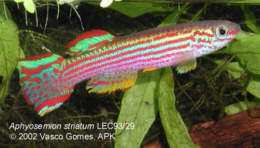
LEC 93
/ 29
Photo courtesy of Vasco Gomes
|
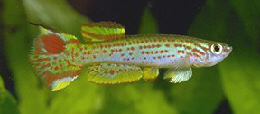
Kinguele
Photo courtesy of Maurice Chauche & the KCF
website.
|
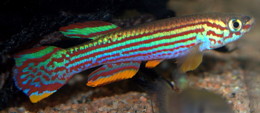
Moyko
GJS 00 / 32
Photo courtesy of Karsten Keibel
|
|
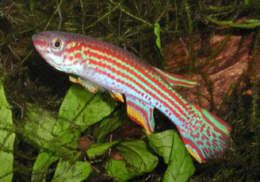
GEMHS
00 / 33
Photo courtesy of Vasco Gomes
|
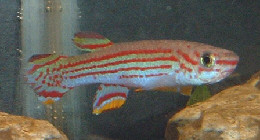
GEMHS 00 /
34 taken at the 2004 SKS convention in Copenhagen.
|
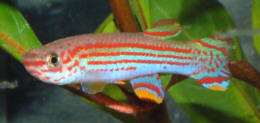
GEMHS 00 /
34 taken at the 2004 SKS convention in Copenhagen.
Photo courtesy of Dick Cox
|
|
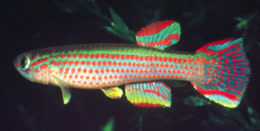
BKA
photo taken in the 1970's.
|

Photo courtesy
of Maurice Chauche & the KCF website.
|

Photo courtesy
of André Paes de Almeida
|
Cap Estérias - Arrived in Europe
a little later than Lambaréné
(early 1970's).
|
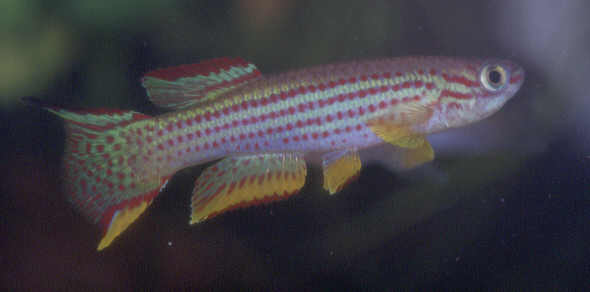
Cap
Estérias. Photo
courtesy of Ed Pürzl
|
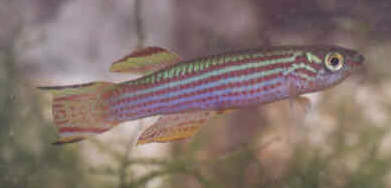
Cap
Estérias. Notice dark outer margin border to the
caudal fin.
|

Aquarium strain
(probably Cap Estérias)
taken early '80's
|
Lambaréné
- Arrived in Europe in the early 1970's (probably
in the Nederlands). They were brought into the UK in 1973 by Species
Import Committee.
|
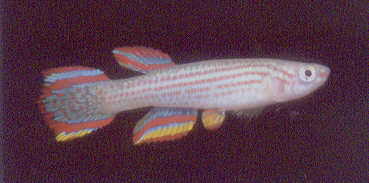
Lambaréné.
Photo courtesy of Ed Pürzl
|
|
|
GEMLCG 07 / 61 -
|

GEML CG 07/61
Photo courtesy of Michael Pidwirny
|
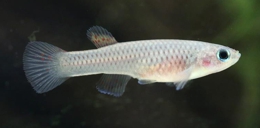
GEML CG 07/61 - Female
Photo courtesy of Michael Pidwirny
|
|
Roman 1968 - On the Aye to Cabo San Juan
road, & 14 km from Rio Benito to Bitica Equatorial Guinea.
Castelo 1989 - Road to Bangui - Idolo,
trib. Aye-Combe, Equatorial Guinea
Bogaert & de Bruin 2004 - This may
be code BB 04 ? - Andem, PK 69, Asengo river basin & Ohngam, Nsogjog
river.
|
| Type
Locality |
Ansorge collected in the Abanga River, Ogowe,
in an area between the 1st & 2nd rapids of northwestern Gabon.
|
| Distribution |
Widely distributed in the coastal areas from
Equatorial Guinea (found in the lower Mitemele River drainage system),
to northwestern Gabon (in the Mbei, Komo, Gabon, Abanga & lower
Ogowe Rivers).
Replaced south of the Ogooue River by A.exigoideum
& A.primigenium.
|
| Habitat |

Lambaréné. Photo
courtesy of Mogens Juhl
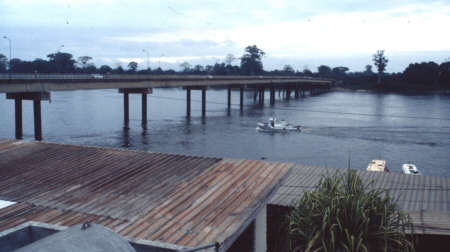
Lambaréné.
Photo courtesy of Mogens Juhl
|
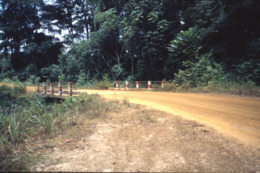
GJS 00 / 34
- Cap Estérias
Photo courtesy of Mogens Juhl.
|
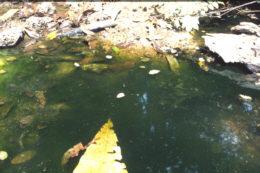
GJS 00 / 34
- Cap Estérias
Photo courtesy of Mogens Juhl.
|
Coastal
rainforest swamps, brooks & small streams.
Prefers stagnant or slow flowing conditions.
See A.escherichi for biotope photo.
|
| Distinguishing
Characteristics |
The
Cap Esterias circulating in the UK in the '80's could be easily seperated
from the aquarium strain by having a black area on the top of the caudal
fin in the yellow outer margin. |
| Colour/Pattern
Variability |
Medium |
| History |
Boulenger based his description of Haplochilus
striatus on 4 specimens collected by Ansorge between the first &
second rapid on the Abanga River. This was a northern affluent of the Ogowe drainage,
Gabon.
In 1912 Boulenger reported a single specimen from Lundo, Luali River,
Portuguese Congo. Pellegrin reported striatum
from the Sangha River (Congo drainage) in 1930. Poll reported 17 specimens in
1952 from the Mayumbe District, Chiloango drainage, Lower Congo. He considered
them to belong to Epiplatys & considered
they may represent a subspecies of ansorgii.
In 1961 La Corte described & figured (in colour) an aquarium form he called
A.lujae. These were collected by Pierre Brichard
(who identified them as striatum) (See also
A.lujae
& A.ottogartneri).
A colour photo of 'La Corte's strain' can be found on page 281 of ROTOW
1. Boulenger gives the following collectors
/ locations in his 1915 Catalogue.
- 1-4 (Types). Collected at Ogowe in the Abanga River
area between 1st & 2nd rapids.
- 5. Collected
at Lundo, Luali River, Portuguese Congo. Both locations collected by Dr.W.J.Ansorge.
A
group of BKA members made a tour of European killie keepers in 1973. A.striatum
were obtained & fish were distributed to Species Control members. Probable
first release into the BKA was at the Collingham AGM in October 1973. |
| Breeding
Notes |
An
easy species to breed. Eggs are laid in top & bottom mops. Water incubation
13-15 days. Growth rate is quite rapid with sexual maturity being attained at
about 4-5 months. Anthony Pinto in BKA Newsletter
No.269 (January 1988) reported breeding them in water of 5 - 10 DH, pH 7, water
temperature 24 - 26°C.
Fry
were fed newly hatched brine shrimp & microworm as a first food. Males were
seen to start colouring up at 3 months. |
| Diameter
of Egg |
|
| Remarks |
|
